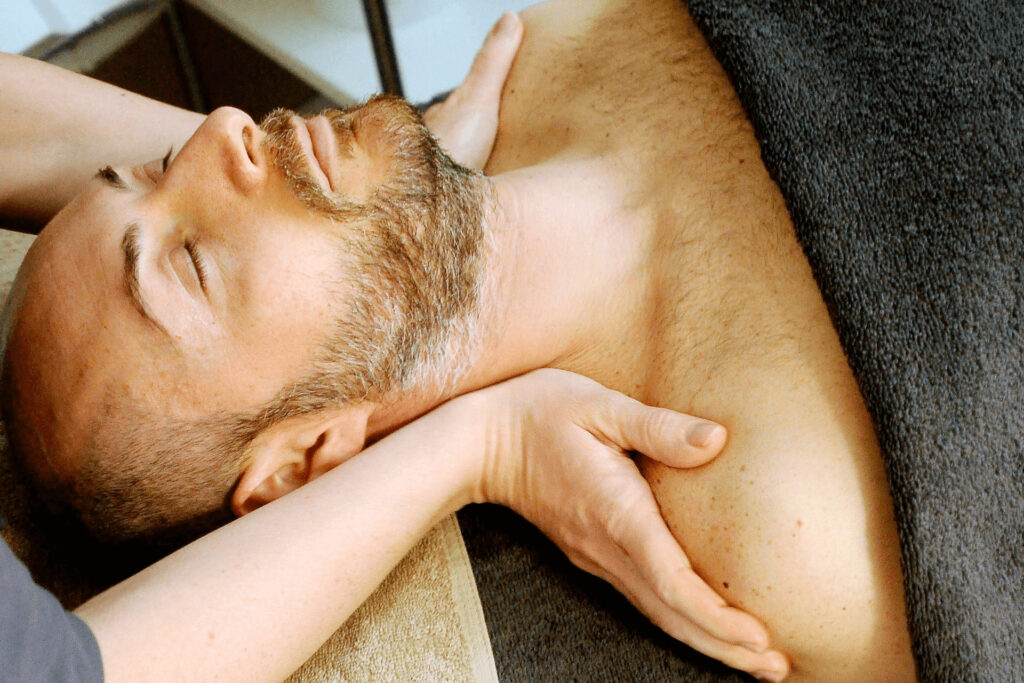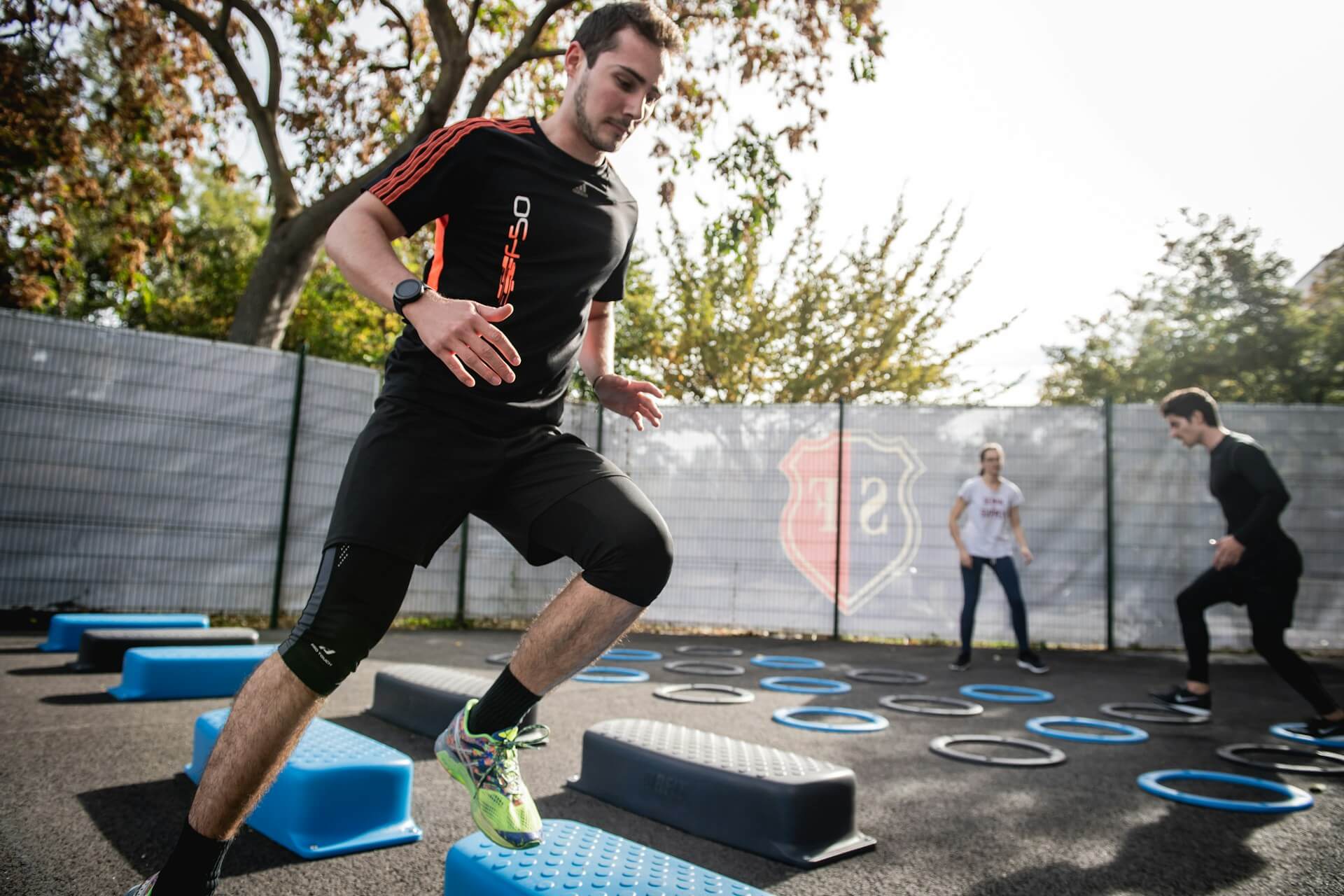How To Relieve Sore Muscles Fast in 6 Ways
Jan 11, 2024

As an Amazon Associate, Modded gets commissions for purchases made through links in this post.
Nobody is immune to muscle soreness. Everyone experiences body pain once they overwork the muscles. Even athletes who’ve been training all their lives or gym goers who never missed a day of workout for years can still feel slight to intense discomfort. But these people can continue their fitness routine without a break because they learn how to relieve sore muscles fast and the consequences of a heavy workout.
How Long Do Sore Muscles Last?
One of the most pressing questions about fitness is how long muscle sores last. The short answer is it depends. Several factors come into play, such as your biology, healing ability and the strain level the body is subjected to.
Muscle soreness has two types: acute and delayed onset muscle soreness (DOMS). Acute muscle soreness is the strain and burning pain you feel immediately after high-intensity training. For example, if you jump squats for several reps, you’ll instantly feel the pressure on the knees and lower body. But you recover from this discomfort quickly.
In contrast, delayed onset is a muscle sore that appears 24 to 72 hours after engaging in a highly strenuous or new physical activity. You’ll feel the stiffness at least a day after you exercise.
You can experience both types of muscle concerns. Although these sensations of pain and stiffness are expected when working out and typically go away after days, it’s still important to take care of yourself to recover.
How Do You Get Rid of Sore Muscles Instantly?
Muscle pain doesn’t vanish instantly, but you can accelerate recovery with some strategies. Learn these six methods that delve into how to relieve sore muscles fast and appropriately.
1. Get Moving
You don’t need to skip a gym day because of soreness. It might sound counterintuitive, but moving less extreme can minimize symptoms and help you recover faster. After a day of high-intensity training, switch to light cardio and stretch the next day to keep the blood flowing.
2. Use an Ice Pack
Ice packs are a traditional method to treat soreness. If you notice swelling on the affected area, apply a frozen towel or a block of ice wrapped on a thin cloth to ease the inflammation. Numb the area for 20 minutes with ice, then remove the towel. Wait for an hour before reapplying the ice pack. Use the same after-workout care for only three days. If it doesn’t get better, visit your doctor.
3. Get a Massage
There’s a good reason athletes and active people frequent spas or hire a private therapist. A massage sounds like the most relaxing thing after a powerful workout, but its best advantage is it eases sore muscles.

A review found sports massage can improve the delayed onset muscle soreness and the person’s flexibility. Consider it if it’s not part of your workout routine yet.
4. Take a Salt Bath
Apart from massage, another ideal method to soothe muscle problems is a warm salt bath. Epsom salt is a popular option for a relaxing soak as it contains magnesium and sulfate, believed to be absorbed by the body when dissolved in warm water. However, scientific proof of whether the body can absorb magnesium or the universal benefits of Epsom salt is lacking. People believe these naturally occurring minerals are what make the salt beneficial. Many people claim it’s effective and most integrative medical experts recommend it.
To use, pour 300 grams of Epsom salt into a tub as running hot water fills it. Adjust the temperature to what you can tolerate to avoid burning yourself. Ease into the tub and soak for 15 minutes.
5. Take a Pain Reliever
A convenient way to relieve stiffness is using medications. Although over-the-counter pills don’t accelerate recovery, they can help alleviate pain and discomfort, making your succeeding gym sessions bearable.
6. Use Topical Pain Creams
Like pain relievers, topical gels, rubs, patches and creams may also relieve muscle. You can get some of these options at your local drugstore, but others may need a prescription, such as nonsteroidal anti-inflammatory drugs (NSAIDs). Make sure to follow the application instructions when using topical creams.
Pre-Workout Tips To Minimize Sore Muscles
Muscle sores are an inevitable outcome of an intensive workout, but you can reduce the pain level by doing a pre-training routine. Here are some suggestions.
1. Do Warm-Ups for a Few Minutes
In yoga, there’s a peak pose in each session, which is the most intense out of all the forms. But before reaching it, the body must be conditioned so you can do the peak challenge safely. It’s the same with your workout routine. Think of it as a movie that starts slow and easy. Doing lighter exercises, like stretching or jogging, for several minutes before increasing the intensity will help prime the muscles for a good workout.
2. Progress Into a New Exercise Gradually
Your body may initially find new exercise routines stressful, so take your time easing into the training. If you want to upgrade the intensity, do it slowly or every other day to avoid overwhelming your muscles. If you develop muscle sores, give your body time to recover by shifting to low- or moderate-impact routines until you feel OK to return to your target intensity level.
3. Set Limited Rest
If you work with a coach, they may advise limited rest, which is the option to restrict the use of sore muscle groups. For instance, if you’re sore after running, try light walking the next day. Avoid completely putting the body into an immobile state. This way, your muscles can adapt to the stress and build tolerance.
4. Remember To Cool Down
Like warm-up exercises, cooling down post-exercise is as important in preventing injuries and improving circulation. Physical activities impose stress on the body. You’d want to return to a pre-exercise physiological state through stretches and other light exercises to lower your temperature and slow your heart rate. Doing this helps transition the body to a stable form of rest.
5. Stay Within Your Limits
A common cause of exercise-related injury is when you push beyond your limits. While it’s tempting and motivating to see proof of progress by increasing your training time or lifting heavier weights, listening to your body is essential. Work through your progress one step at a time to ensure you don’t injure yourself.
Muscle Sores Are an Inevitable Part of Exercise
The level of muscle soreness after a satisfying workout varies for each person. Some people may only feel slight pain. Regardless, taking care of your body during fitness training is vital.
People always say, “No pain, no gain,” but you can lessen the pain by building your workout nicely. Do a series of warm-up routines first before intense activities. More importantly, listen to your body and train with limits in mind. At the end of the day, a good workout is one without injuries.






